AOC AGON AG271QG Review - AOC AGON AG271QG – Image Quality and Verdict Review
AOC AGON AG271QG – Image Quality and Verdict
AOC AGON AG271QG – Image Quality The AG271QG looks great. Everything from colour accuracy and contrast to uniformity and viewing angles are spot on, as you’d hope for such a pricey display. It’s punchy, colourful and just generally a pleasure to look at. The most obvious advantage this panel has over cheaper TN LCD-based gaming […]
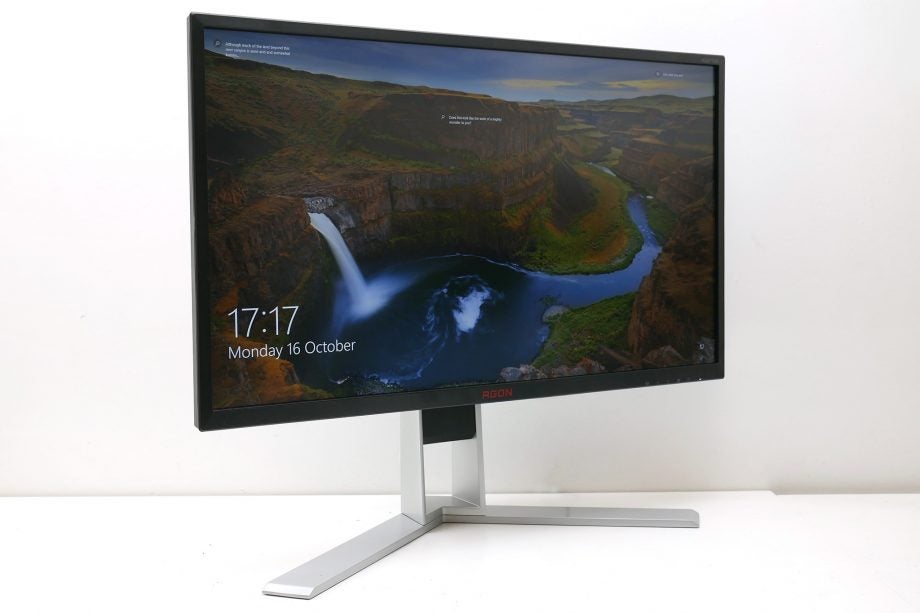
Sections
- Page 1 AOC AGON AG271QG Review
- Page 2 AOC AGON AG271QG – Image Quality and Verdict Review
AOC AGON AG271QG – Image Quality
The AG271QG looks great. Everything from colour accuracy and contrast to uniformity and viewing angles are spot on, as you’d hope for such a pricey display. It’s punchy, colourful and just generally a pleasure to look at.
The most obvious advantage this panel has over cheaper TN LCD-based gaming monitors is the better viewing angles of its IPS LCD panel. This means you get a more even and consistent image that doesn’t deteriorate as you view it from an acute angle.
You do get the inevitable IPS glow, though. This is where there’s a little bit of white light leaks through when viewed from an angle. It’s generally far less distracting than the colour changes with TN panels but can be slightly annoying when viewing dark images. That’s just the compromise of LCD monitors, though.
Related: Best gaming monitors
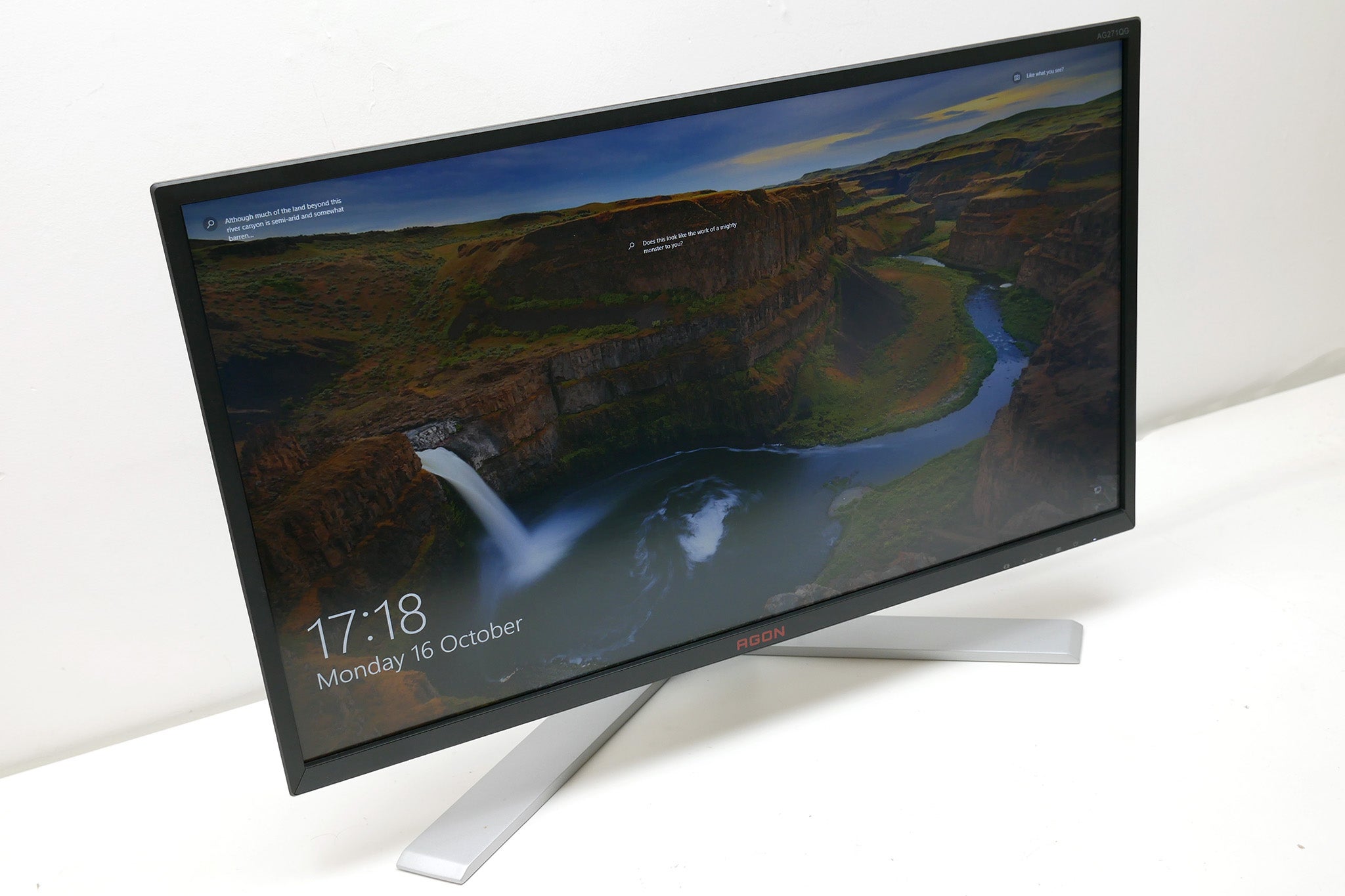
Moving on from subjective initial impressions to something more objective, I fired up my colorimeter and it proved that this display is a good performer out of the box, and even better when it’s been properly calibrated.
Contrast is an excellent 1312:1 while gamma is a perfect 2.2. This means the screen can not only provide deep blacks and bright whites at the same time but also presents all the shades in between at the right level too.
AOC AGON AG271QG – Non-calibrated image quality metrics
- Max Brightness: 330nits
- Contrast: 1312:1
- Gamma: 2.2
- Colour Temperature: 6636K
- Delta E average: 0.32
- sRGB coverage: 99.4%
- DCI P3 coverage: 80.2%
Its colour accuracy is also excellent, with a Delta E of just 0.32 (close to zero means colours are perfectly accurate) and sRGB colour space coverage of 99.4%. It’s colour balance, meanwhile, appears decent, with a colour temperature of 6636K. This is within the +/-200K that I’d normally consider acceptable and is still better than the likes of the Asus PG279Q, but next to a calibrated display this panel’s slightly greenish hue was more noticeable than I expected.
To be clear, this is nit-picking of the finest order, and a tweak of the display’s colour controls brings it back into line, it’s just slightly irksome it wasn’t bang-on out of the box.
To bring it into perfect colour balance I swapped from the default Warm colour temperature to the User one. I then adjusted the colour balance from 50x50x50 to 65x60x63. That may sound extreme but 65x65x65 is the setting for the default Warm temperature, so I set it to that and worked backwards to come up with the ideal setting.
Once those adjustments were made, this monitor produces as good an image as you can get from a gaming monitor. A final software calibration with DisplayCal software and the following results are what this display can achieve.
AOC AGON AG271QG – Calibrated image quality metrics
- Contrast: 1172:1
- Gamma: 2.19
- Colour Temperature: 6509K
- Delta E average: 0.25
- sRGB coverage: 99.8%
- DCI P3 coverage: 82.3%
What’s more, I measured no significant difference in image quality at different refresh rates. Some displays deteriorate considerably at higher refresh rates but this one was as good at 165Hz as 60Hz.
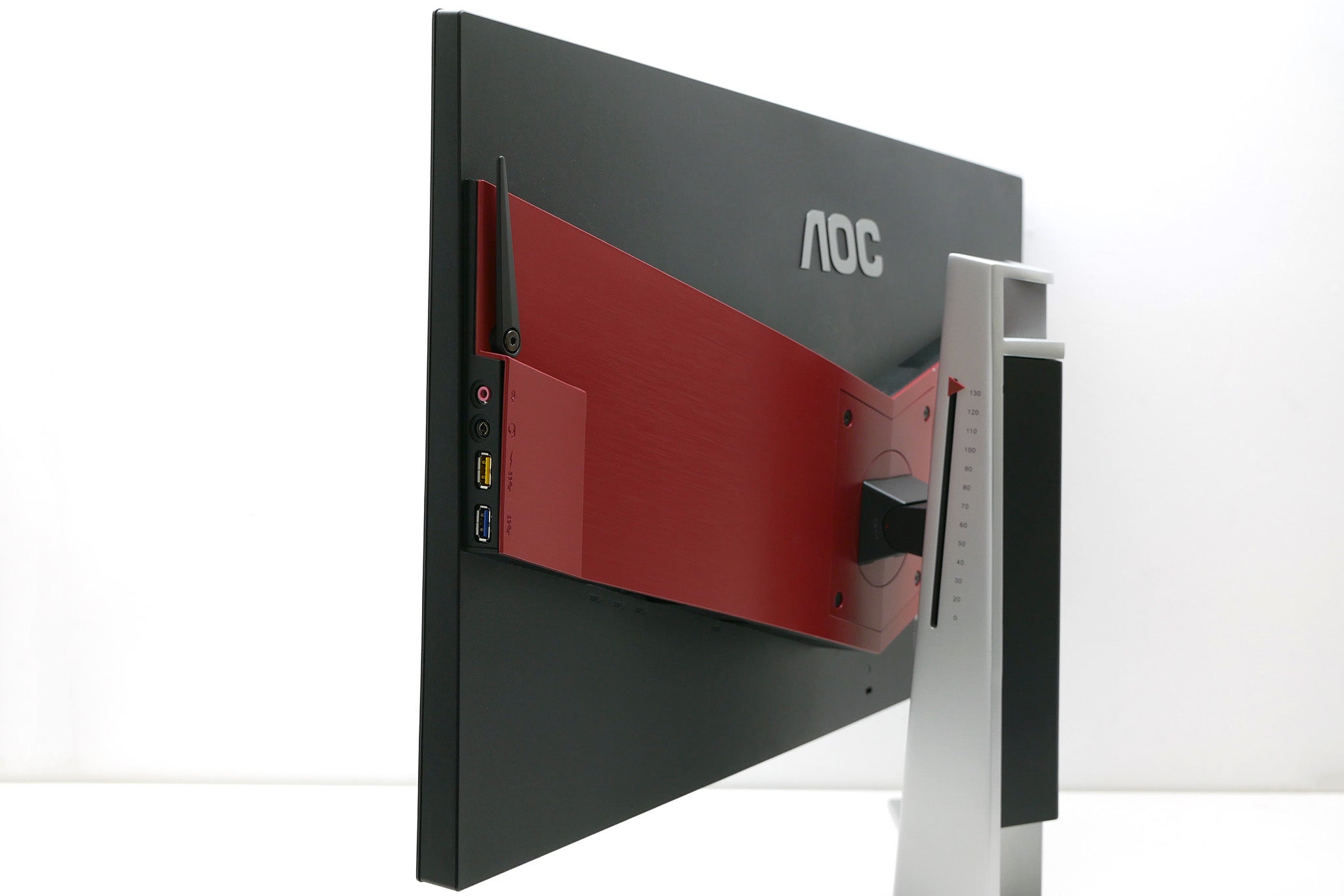
AOC AGON AG271QG – Gaming Performance
Crank this display up to its maximum 165Hz and it’s a truly excellent gaming performer. For the most part there’s no noticeable difference between 144Hz and 165Hz but, you never know, maybe one day those extra speedy frames will make the difference to your game. And, admittedly, some gamers are more sensitive than others to this effect.
With a 4ms response time, this is the major area where you’re giving up performance compared to TN LCD gaming monitors that have 1ms response times. The difference is subtle but is definitely there. I’d still happily play competitive FPS games on this display, accepting the speed compromise in favour of exceptional image quality everywhere else. However, if pure gaming performance is all you care about then you may still want to go for a TN gaming monitor.
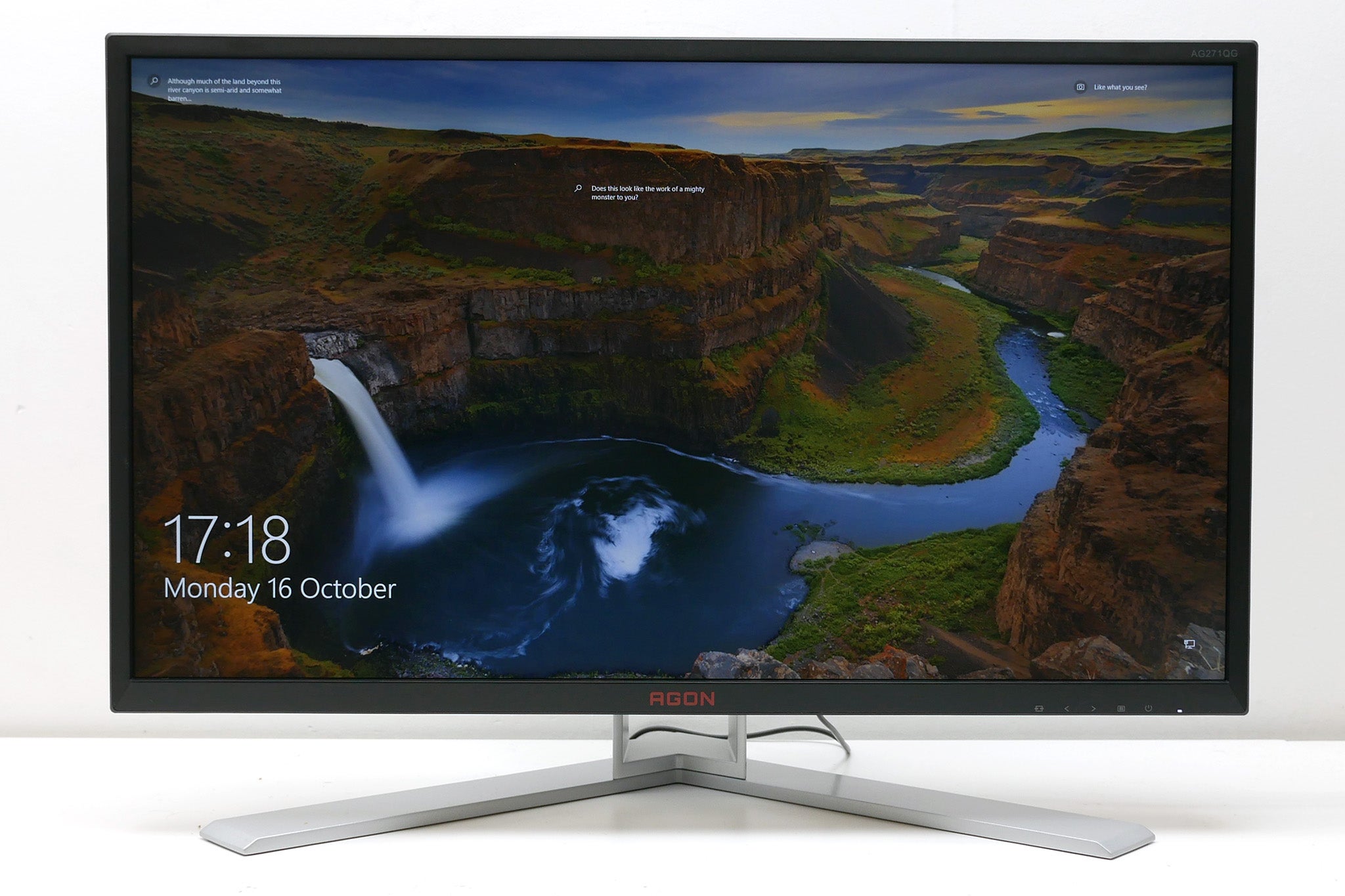
As for G-Sync, it works perfectly all the way up to 165Hz and is as welcome as ever, preventing unsightly frame tearing and V-Sync-associated stuttering. In competitive gaming it’s less of a concern – I tend to leave it off – but for single-player games where you just want as visually engrossing an experience as possible, it’s nice to have.
On the flip side, ultra-low motion blur (ULMB) is a nice extra for more competitive gaming. Its strobing technique reduces eye tracking motion blur and reduces the visibility of pixel transitions, making for a sharper-looking image. However, it only works at between 85Hz and 120Hz and drops brightness down to a maximum of 137 nits. It’s nice as an optional extra be likely won’t see everyday use.
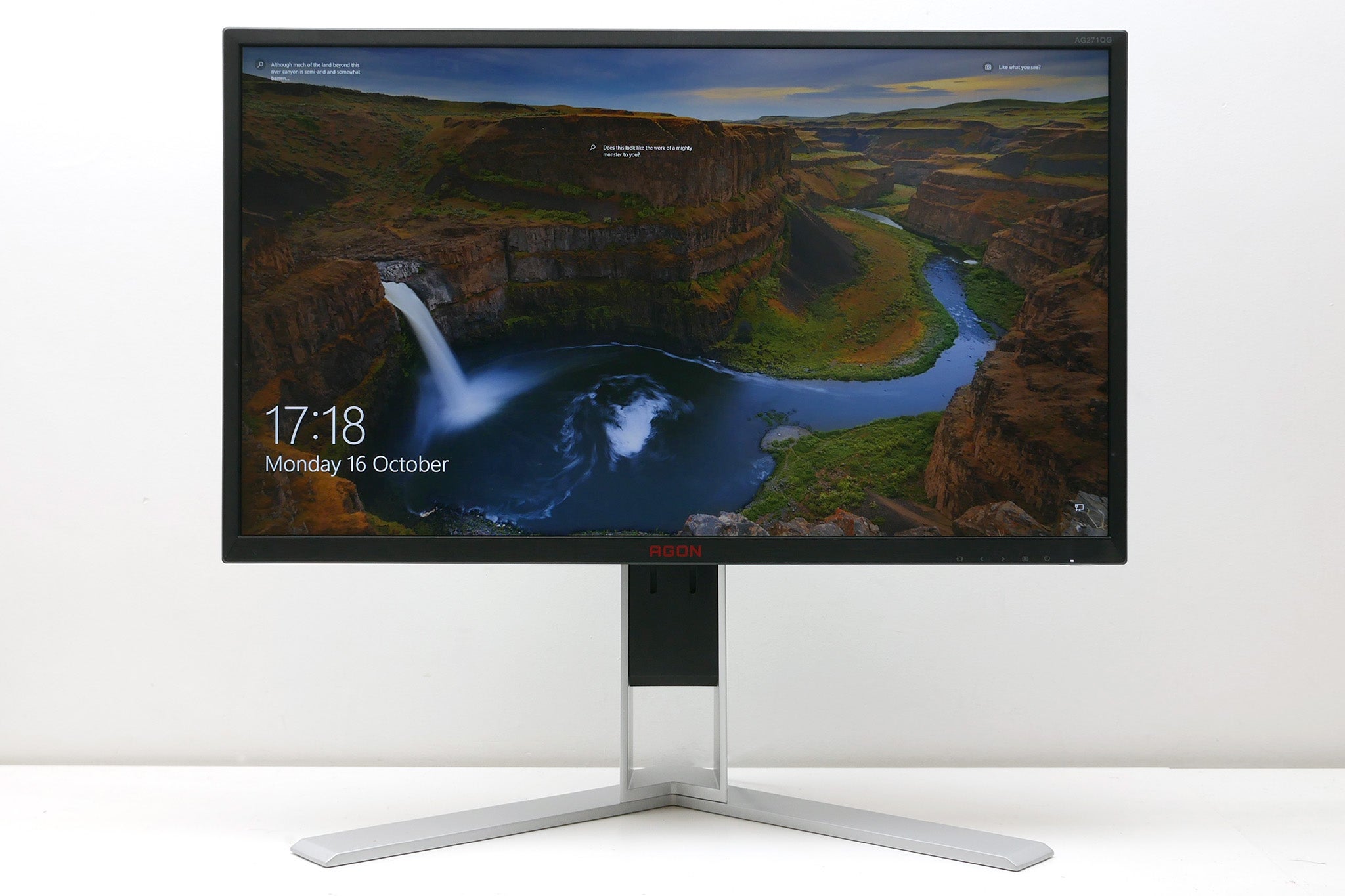
Should I buy the AOC AGON AG271QG?
This a fantastic all-rounder of a gaming monitor. Great overall image quality, excellent gaming performance, a reasonably nice design and plenty of features combine to mean there’s little more you could ask of it.
What’s more, AOC offers all this for less than the competition. The Acer XB271HU can be had for around £670 and the PG279Q for around £700, so the AOC undercuts them both by enough to make a difference.
The main caveat here is the fact that you’re paying a premium for G-Sync. You can get the similar Freesync-equipped AOC AG271QX for just £420. If you already have an Nvidia graphics card then you may not mind paying the extra, but that £150 difference is worth factoring in if you’re thinking of upgrading both in the near future.
Verdict
AOC’s AGON lineup continues to impress with yet another great quality monitor that’s cheaper than the competition.
Trusted Score
Score in detail
-
Image Quality 9
-
Design 8
-
Value 8
-
Features 9

